|
Save early and save often! If you ever stop working in one
application to move to another application, save before leaving the first
application. Unfortunately most people don't pay attention to saving until
the first time they lose an hour's work when the computer freezes. So, one
last time, save, save, save! ! !
|
|
|
|
|
|
|
|
|
The program I will be using for this example will be
Wordpad.
This is a small word processor found in the Accessories menu. Start,
Programs, Accessories, Wordpad |
|
|
|
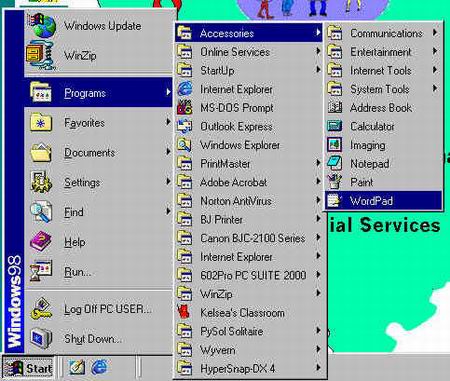 |
|
|
|
|
|
|
|
|
This is the main screen for Wordpad |
|
|
|
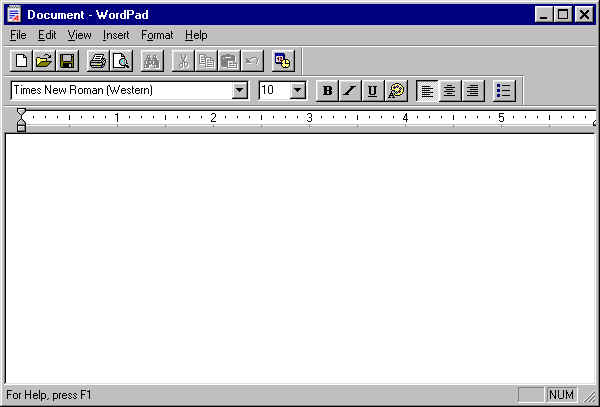 |
|
|
|
|
|
|
|
|
The first time you save:
After working a few minutes, stop. Go to the File menu and select Save..
|
|
|
|
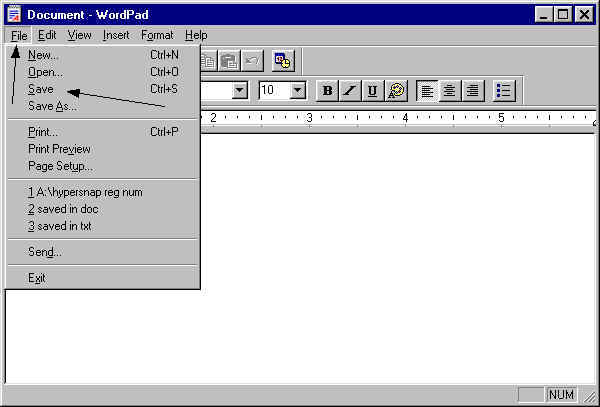
|
|
|
|
|
|
|
|
|
Windows will ask you for a file name and location where you want to save your
work. |
|
|
|

|
|
|
|
|
|
|
|
|
Save Location - The default saving location for many Windows applications is
a folder located on your desktop called My Documents. Until you get accustomed
to finding your way around your computer this would be a good place to save
things. As you gain experience you may want to create your own folders on the C:
drive as a saving location for images for presentations, lesson plan ideas or
anything else you might need. Tip See: the How To's for creating folders |
|
|
|
|
|
|
|
|
Save As Location - This is used when you want to save your document with
another name, or in a different place, or with a different extension.
If any of the locations in this window have other folders into which you can
save, you may select them with your mouse pointer in the Save As window.
|
|
|
|
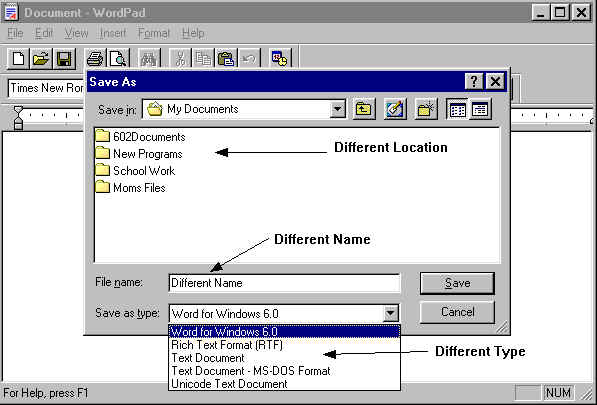 |
|
|
|
|
|
|
|
|
Change Location - If you don't plan to use the default saving location, move
the tip of your mouse pointer to the downward pointing triangle and gently click
one time with your index finger. Move your mouse pointer up or down in the list
to select a new saving location. If you plan to save to your floppy disk, select
3 1/2 Floppy (A:). |
|
|
|
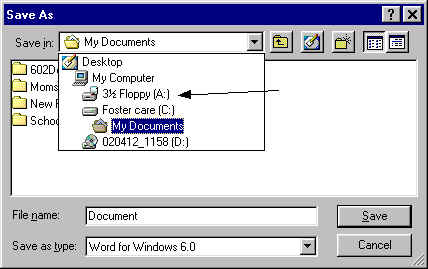 |
|
|
|
|
|
|
|
|
Document Name - If the File Name block contains a file name that is
highlighted, type the name of your new document. Your new name will replace the
highlighted name. If the name is not highlighted, click and drag to highlight
the name before changing it. Click and drag means, place your mouse pointer to
the right of the title, depress the left mouse button and move the mouse to the
left until the name is highlighted. |
|
|
|
|
|
|
|
|
Naming suggestions - Use a name that reflects the content of the file. I
recommend using lower case text, it is easier to type. Avoid using your name. If
I have three files names byles1, byles2 and byles3, I may not remember a week
from now what is in byles2. |
|
|
|
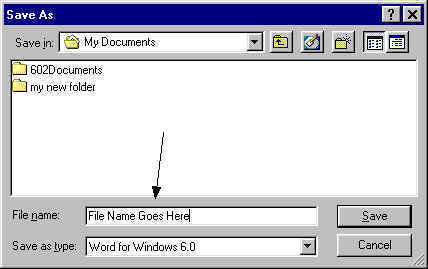 |
|
|
|
|
|
|
|
|
Document Type - As a new user, you will usually not need to worry about this
block. Some programs need to save the files created with them in a cretin way.
This is identified by the extension (3 letters or numbers after the period in a
file name). There should be only one period in a file name. Most programs will
add the period and the extension automatically. In Microsoft Word the extension
will be DOC. Windows uses this extension to start the programs you used to
create the files. This is called associations
|
|
|
|
|
|
|
|
|
Change Type - In many applications, the file that you are saving can be in
several different file formats. For example; instead of saving a Wordpad
file you have been typing in document format (.doc) you could save it in text
format (.txt) You should be sure you know what format you want to use before
changing anything here. In the examples below I saved the top one as a document in document
format (.doc), and then I save the same document as text only (.txt). Notice,
all of the formatting is lost when I saved as text only.
Caution: Take care when changing file types. |
|
|
|
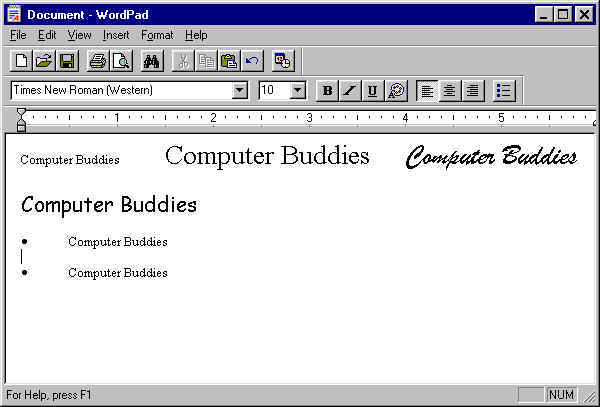
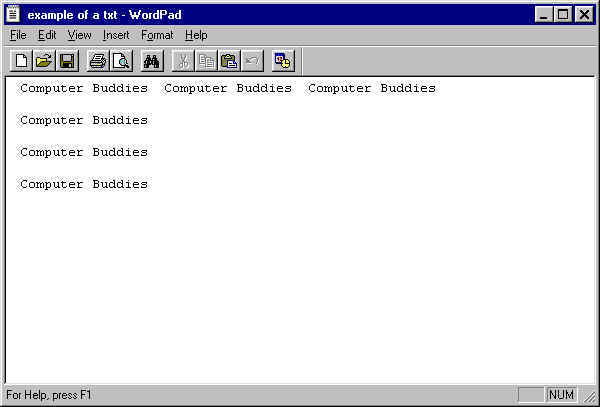
|
|
|
|
|
|
|
|
|
|
|
|
|